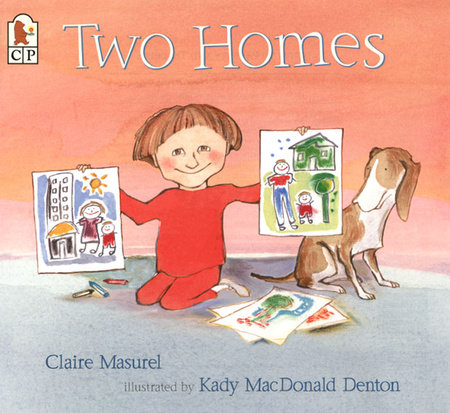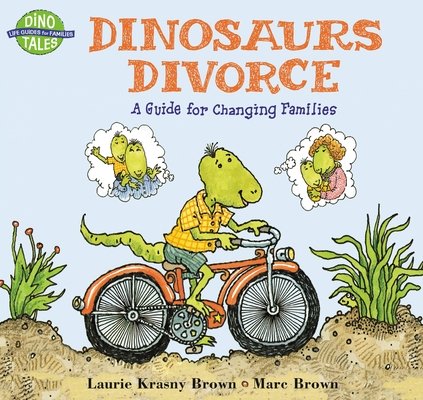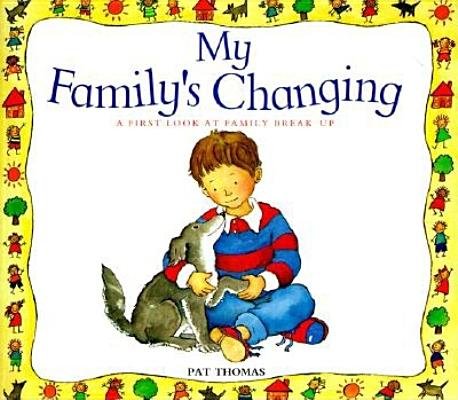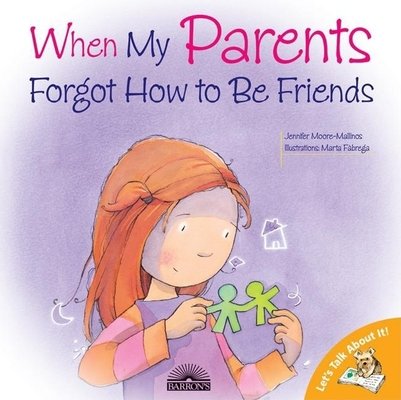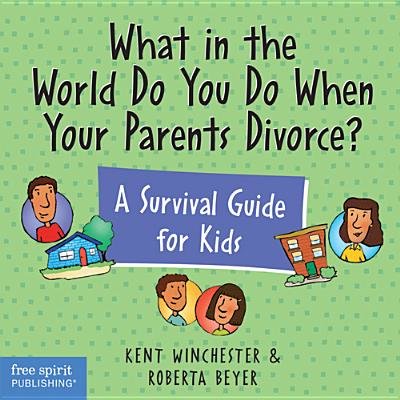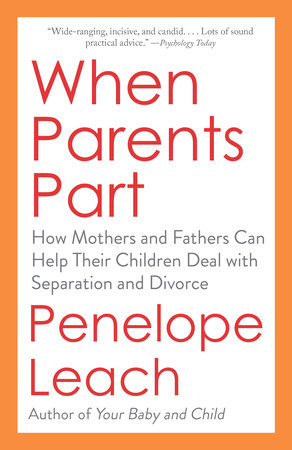7 of the Best Children’s Books About Divorce and Separation
by Penelope Leach
Only about half of the students graduating high school have parents who live together, and for at least half of those teenagers the breakdown of their family happened much earlier in childhood. Last week, I asked some 13-year-olds if deciding what to tell friends, and which friends to tell, was a problem. “Oh, no,” said one, “because there are only two girls in my class whose parents are together.” Parents who had a mild squabble in front of their kindergarten child were amazed when she asked if they were getting a divorce “like Jack’s mom and dad.”
The Details Matter
So the word is familiar but, of course, that doesn’t mean it’s understood. Even children who do actually know what divorce means can’t have any idea what it might mean for themselves. That’s where children’s books about divorce can be helpful, but it’s important to take care when choosing a book. Children, especially very young children, won’t be able to apply a book’s information to themselves if there are details that don’t fit. They may even find it misleading. For example, in Two Homes Claire Masurel writes: “At Mommy’s house, Alex has a soft chair. At Daddy’s house, Alex has a rocking chair. In each home, Alex also has a special bedroom and lots of friends . . . ” Two Homes paints a warm and reassuring picture that tries to emphasize the positive aspects of having parents who live apart, but your child might feel that it has nothing to do with his or her own life experiences.
So if you want a book to familiarize your child with your separation or divorce, make sure you browse before you buy, keeping a careful eye on the kinds of details small children notice. What does your child call her family members, for instance? If she calls you Mama and Dad and Gran, and you all live in the city, a book about Mommy and Daddy and Grandma who live in the countryside isn’t going to feel like a book that applies to her family.
Animals Can Be the Exception
There are books that manage to give information in a way that applies to every child. Dinosaurs Divorce by Laurie Krasny Brown and Marc Brown is one of the Dino Life Guides. An A-Z for children ages 3 to 6, it’s packed with information on everything from “Divorce Words and What They Mean” to custody and contact issues to “Meeting Parents’ New Friends,” and because the families in the book are dinosaurs, differences between the reading-child’s and the book-child’s family are blurred. This is probably the book about divorce that kids mentioned to me most often.
Help for Kids of Varying Ages
A book for preschoolers that really helps children to apply its words to their own situation is My Family’s Changing by Pat Thomas. Pat is a psychotherapist, and this picture book is designed to help very young children talk about their worries and fears when parents divorce. I especially recommend it for its sidebars that ask “What about you?,” which allow child-readers pause to compare themselves and their feelings to the book-children.
When My Parents Forgot How to Be Friends by Jennifer Moore-Mallinos is one of the Let’s Talk About It books and concentrates on assuring school-age children that they are in no way to blame for their parents’ separation and that each parent will still love them even though they don’t love each other anymore.
For older children — grade-schoolers and tweens — there’s lots of direct information in a Q&A format in What in the World Do You Do When Your Parents Divorce? A Survival Guide for Kids by Kent Winchester and Roberta Beyer.
Don’t Just Look for ‘Divorce Books’
Stories, good stories in their own right, that just happen to be about children whose parents aren’t together or who are in some other kind of stressful situation may be more fun for children to read or have read to them, and more useful as well. The more stories your child reads or hears that feel relatable, the less isolated in sadness and the more comfortable with emotion she will feel. These books don’t have “Divorce” or even “Family” in their titles so you will have to select carefully, perhaps starting with authors you know or reviewers you trust. Two much-recommended examples are The Huge Bag of Worries by Virginia Ironside and Cool! by Michael Morpurgo.
The Huge Bag of Worries tells the story of a little girl who finds herself staggering under the growing weight of her worries and anxieties about school. Everyone she would like to tell about her troubles is so busy with their own problems that she feels she shouldn’t bother them. Eventually her grandmother notices her growing “bag of worries” and they work through her worries together. The child finds lots of different ways of coping with different worries, including sharing them.
Michael Morpurgo is one of my favorite storytellers, and if your child gets hooked on him there are lots of books to choose from. Cool! is about Robbie, a boy who is in a coma after being hit by a car that was about to run over his dog, Lucky. He is locked inside his own brain, able to hear but not to move or to speak. We are inside his head, and hear his thoughts about his mom, his sister, and why his parents are separated. Everyone tries to wake him up, but nobody can reach him until Dad breaks all hospital rules and brings Lucky in.
Don’t Forget That Books Are for Fun
The fact that books can be really useful and comforting during the months of a family breakdown doesn’t mean that every book your child reads or listens to has to have a connection to the real-life situation. Books are for fun, and for finding out, for exercising the imagination, and for escape. Don’t let the tensions and stresses in the family influence what is read or deprive children of being read to. Books and reading are meant to be blissful.
-
Books Mentioned in This Article
-
Dinosaurs Divorce
Preorder from: -

